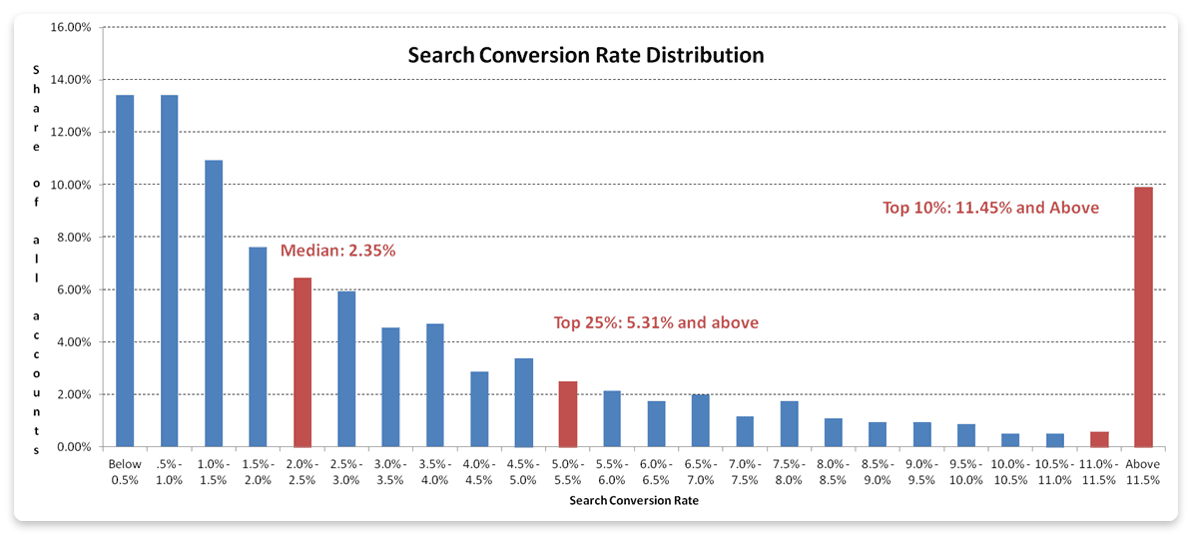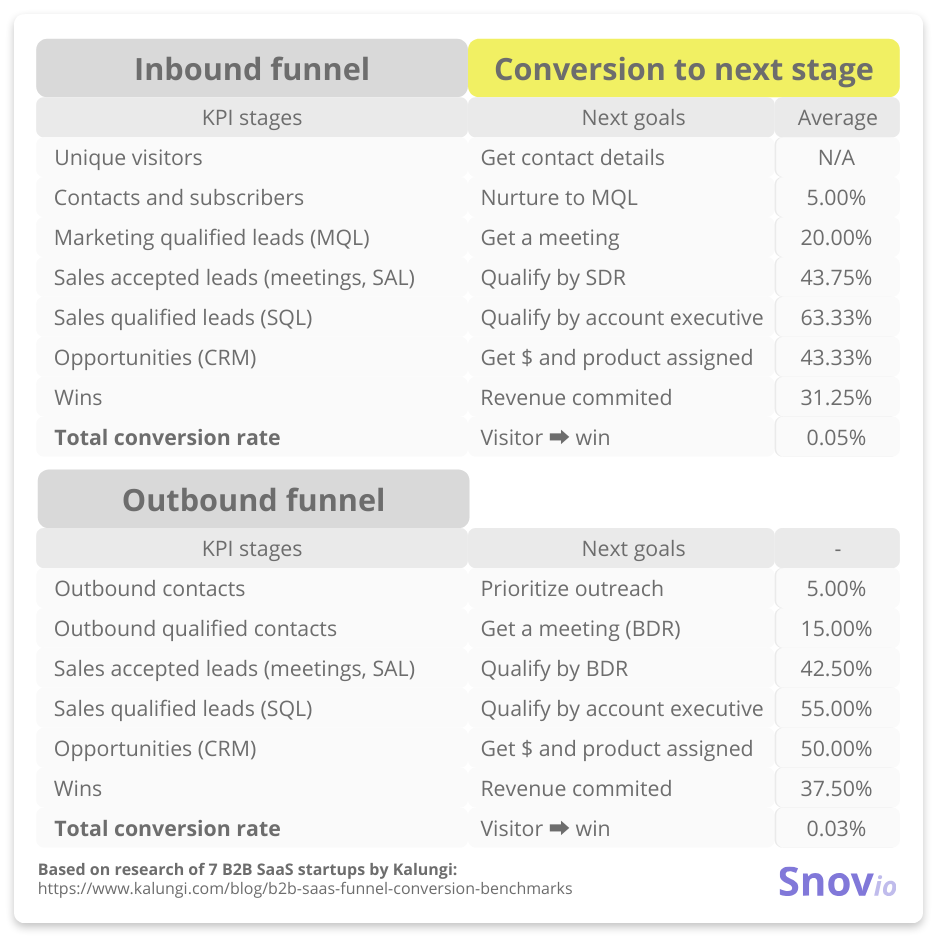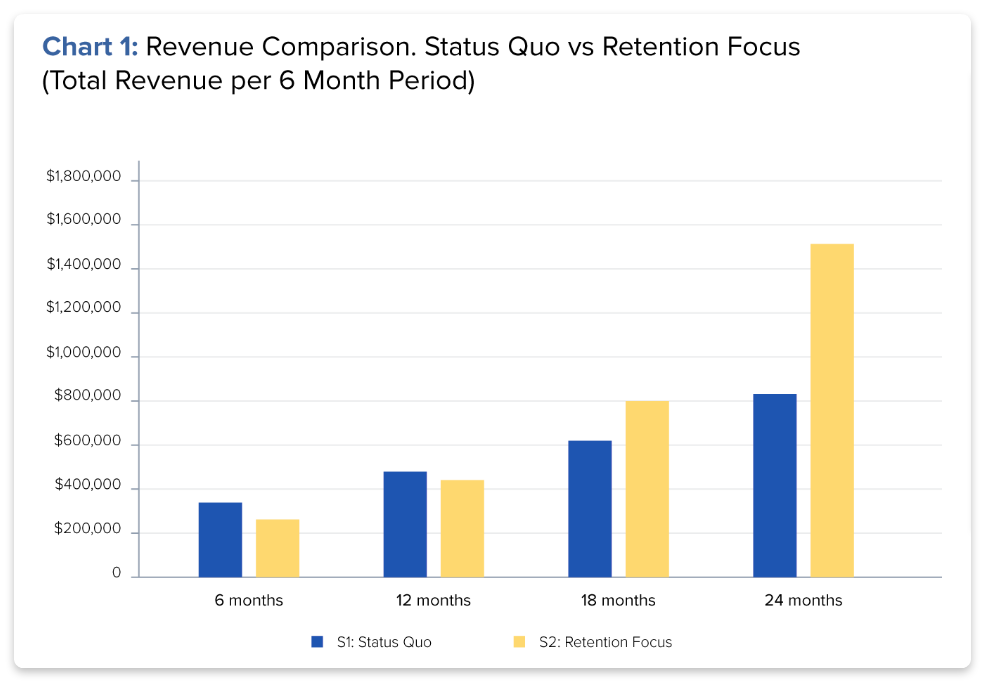When I was first getting involved in marketing, concepts like CRO were intimidating. However, they are only intimidating in theory. Growing sales is every company’s priority, and conversion rate optimization will help you with that.
Putting in a little time and effort into conversion rate optimizations can bring a massive boost to your KPIs and business growth overall, and we’re here to help you get started. Here’s our compilation of conversion rate optimization strategies, tools, and best practices that will help you convert more and better.
Outline:
What are conversion, conversion rate, and conversion rate optimization
Before we fully get into conversion rate optimization, let’s define what a conversion and conversion rate are.
A conversion is a process of a lead changing their status – from a visitor to a subscriber or a user, from a free user to a paid one, from a paying customer to an upgraded one, etc. So every time a lead changes the status to a higher one, you get a conversion.
Conversion rate is the proportion of people who visit a website to the ones who convert (for example, subscribe or make a purchase). To calculate your conversion rate (in most cases this stat will be calculated automatically in your analytics tool), you need to know the exact number of visitors and the number of those who have converted. Here’s the conversion rate formula:
Conversion rate = conversions ÷ general visitors × 100%
There’s no perfect conversion rate for a business. The sky’s the limit so aim for the highest. Essentially, everything depends on your business type, field, and the type of conversion you are tracking (signup, purchase, upgrade, etc.).
That said, we can set certain standards according to known research:
✔️ According to IMR research, 3% is a good conversion rate for a new B2B website.
✔️ For software and SaaS, the average conversion rate is about 7% (please note, this research is on the older side – from 2012).
✔️ The average landing page conversion rate across all industries is 2.35%. However, the 10% of companies reach a conversion rate of 11.45% and higher across their entire account, not just landing pages.

However, in more recent research, the median landing page conversion rate across 10 industries was 4.02% (according to Unbounce study based on 74,551,421 visitors).
The conversion rate is unique not only for every business and niche, but for the stages of the sales funnel too. I especially like the exactness of this data by Kalungi, based on 7 B2B SaaS startups. I wouldn’t recommend using it as a benchmark, but more like a curious insight:

Conversion rate optimization is a system of actions performed to increase the conversion rate through improvement of copy, UX, design, and any other changes that will help convert a lead from one stage to the other better and faster.
Why invest in conversion rate optimization
The main goal of any conversion rate optimization strategy is to increase the revenue.
CRO is essential to any business’ growth: you may not even notice, but every tweak you make to your offer, app, design, or copy is a part of it. So what exactly is improved by conversion rate optimization (besides the revenue)?
1. Major user experience improvement.
One of the main aspects of CRO is the speed – the time it takes for a lead to convert. And one of the main hinderers of conversion is a bad user experience. With conversion rate optimization you can review your whole UX – from which steps confuse the user to how long it takes them to check out. The smoother the experience for the user, the more they will see you as a perfect solution.
2. Growth in customer retention.
We have spoken time and time again about why customer retention does wonders for your business, but it’s always good to remind once more:
- It costs 5 times more to acquire a new customer than to retain an existing one.
- Only a 5% increase in retention results in 25-95% growth in profits.
- Your chance of selling to a new prospect is only 5-20%. Your chance of selling to an existing customer is 60-70%.
Your conversion rate optimization strategy will inadvertently affect your retention rate as well.

There are many reasons why users and customers churn, but the three leading ones (53% of all cases) for SaaS companies are: poor onboarding (23%), weak relationship building (16%), and poor customer service (14%). All of these problems are addressed by most CRO strategies, and if your particular one doesn’t, take the time to improve those first to significantly grow your retention. It’s so worth it.
3. More traffic.
The better your website, the higher your chances to rank on the first page.There’s a lot that goes into it, but high load speed, good landing page copy, low bounce rate, and high time-on-page are some of the most important factors that are also improved during conversion rate optimization. Growing traffic while growing your conversion rate? Sounds like the perfect strategy.
4. Higher ROI.
The higher the conversion rate – the higher the ROI across the board. After CRO, your paid ad, email, and all other kinds of campaigns will become more profitable. How profitable, you may ask? How does an average of 223% increase in ROI sound? Conversion rate optimization tools really do what they claim to do, with 5% of those surveyed reporting ROI increase of over 1000%.
5. Cost-efficiency.
I’m not sure what we can say here that hasn’t been already mentioned, but it still felt important to mention cost-efficiency in a separate point. Many of the conversion rate optimization steps cost close to nothing to take, but the results are fantastic. However, if every penny counts for your business (no judgement here, conscious spending is often the key for young businesses), there are a few free CRO tools you can try.
Optimization: CRO vs SEO
Often marketers aren’t sure which optimization is more important for them – CRO or SEO. Let’s not get confused here, they are two completely different things. While conversion rate optimization focuses on increasing the conversions, search engine optimization’s goal is to rank higher on search engine results pages to bring a massive traffic boost to your website.
We highly recommend using both for the perfect combo strategy of high traffic/high conversion we’ve mentioned before. But if you have to choose – take a closer look at your most basic KPIs. Focus on SEO if you want to boost traffic, and CRO if your traffic is high but conversions are lacking.
The choice may also depend on your current conversion rate. Here we recommend using some good rules of thumb from Invesp: If your campaign, landing page, or website get less than 200 conversions a month, focus on getting more traffic through SEO. You will need it for A/B testing necessary for conversion rate optimization, and 200 conversions is not enough for consistent results. With 200+ conversions, begin optimizing your conversion rate through A/B testing. If you still haven’t focused on CRO by the time you reach 1000 monthly conversions, do it ASAP. Most people visiting your website open it with an intent to buy, and you’re bleeding conversions if you’re not focusing on CRO.
Conversion rate optimization steps
Rome wasn’t built in a day. Conversion rate optimization is time-consuming and all departments will be involved in the process. We really like this CRO framework published on Moz, here it is:
Step 1. Research and analyze
Put yourself in the customer’s shoes:
It’s easy to forget that you don’t, in fact, know more about your website and product than the customer. That’s why it’s important to become the customer – try buying the product or service, take screenshots or record the process. Try using it the way a real customer would.
Set up goals and funnels in Google Analytics:
Setting these up right will show you where you’re losing traffic and where your biggest opportunities may be. This article may help you with that.
Use more tools to analyze your website:
Use tools like Crazy Egg to view heatmaps of your website and analyze which areas get the most clicks. You can also use ClickTale that has several tools in one to see how far your visitors are scrolling, view recorded user sessions, and see what causes visitors to abandon the page.
Conduct usability tests:
Usability testers like UserTesting.com are affordable, quick, and offer comprehensive insights into your website usability.
Survey customers:
Survey customers any way you want – through email, calls, or directly on the website. Remember not to give a choice of answers, their answers must be theirs and in their own words. In the end, survey results should somehow align with the usability issues or objections (can’t buy and won’t buy) you have already collected in the previous stages of this step, confirming the known issues or uncovering new ones you might’ve missed.
Talk to your salesperson:
Find out what issues and questions the visitors mention and ask your salesperson about, and get the answers to these questions. As with every step. try to record it for further analysis. The more thorough you are with collecting data at this stage, the easier it will be to work on the next CRO steps.
Step 2. Find solutions
Create a spreadsheet of collected issues and objections:
Collect all the usability issues and objections from stage 1 into two tabs in one spreadsheet. Highlight those you believe could be affecting your conversion rate the most.
Brainstorm solutions with all of your departments:
Find ways to resolve collected usability issues and objections hindering your conversion rate. Write them down in the second column.
Think outside the box when it comes to solutions:
Get creative and eliminate the steps stopping visitors from a conversion if you don’t absolutely need them. Visitors abandoning trial sign-ups at “add a credit card” step? Eliminate this step for free trials. Want to improve conversions for returning visitors – remind them they’ve considered you before by pulling up a sign-up form with the info they’ve already filled but haven’t submitted. There are just a few examples, your solutions can get less conventional than that.
Prioritize the solutions:
Consider which solutions will bring in the biggest results. Consult the developers on how easy and quick your solutions will be to implement. Prioritize those on top of both yours and developers’ lists.
Step 3. Develop and test variations
Develop variations for testing:
Don’t test too many things at once – you need to be able to keep track of what is bringing the conversions up or down. Don’t forget to track every element you test and the results in your spreadsheet.
Analyze the variations:
Use the analytics tools from step 1 to A/B test your variations.
Test variations using Google Optimizer:
…or other A/B testing tools.
Step 4. Review the results
Log the results with screenshots and recordings:
This is the main step that, as you repeat this process, will help you create a database of things that work and don’t work for you.
Analyze the results:
Note all the big wins and big losses. If you’re unsure exactly what caused an increase in conversions on a page, check out the heatmaps and other data, consulting with the lists of objections and issues as you do it.
Take winning strategies to the max:
If you find that adding an element to a page boosts conversions, try adding 5 more! Take all winning strategies to the extreme to see if you can take those improvements even further.
Consider applying it to other parts of the funnel:
Try applying the principle behind a strategy that improved conversions (adding a trust element, highlighting a benefit, introducing a guarantee) in other parts of the funnel.
Step 5. Repeat
Yeah, conversion rate optimization is an ongoing process. Insights from the first line of testing will give you more ideas for CRO.
Want a handy infographic breaking down conversion rate optimization with tools you might need along the way? Here’s one from SEOGadget:

Conversion rate optimization best practices
I want to begin this chapter by saying that what we (and all the other blogs) may describe as conversion rate optimization best practices are not exactly that. Conversion rate optimization is highly individual for every business – hence the 5-step process for developing it. There are no one-size-fits-all best practices: you have to research, survey, test, and analyze.
What we have here, instead, is a list of extremely obvious things that almost duplicate the CRO steps we’ve described above (+ a few tips):
1. Clean your email list
You don’t want to waste your resources on inactive accounts or send your cold email campaigns to people who are not interested in your product or service.
We recommend collecting targeted leads with Snov.io’s email search software and ensure they are valid with the help of email verifier.
2. Never guess
Guessing what can improve conversions is just that – a guess. Make educated and informed decisions based on analysis and testing.
2. Reduce friction
The smoother your user’s journey is, the faster they will get to that conversion. Get rid of anything that may evoke an objection from the visitor.
3. Always test
See point 1.
4. Build trust
Lack of trust is one of the main conversion killers. Use testimonials, guarantees, case studies etc., to build it. You can’t sell to a visitor if they don’t trust you.
5. Survey users
As we’ve mentioned before, don’t assume you know your product or service better than the user. Survey them to find out what objections or issues they really have and see point 1 again.
6. Invest time in SEO
You can’t test if you have no traffic. More traffic = more testing = more conversions.
Want more tips? We’re liking these from Marketing 360:
A business will never grow without conversion rate optimization
Conversion rate optimization should be one of your priorities in growing a business. It helps you improve every single aspect of your product, service, marketing, and sales, with every minor improvement having the potential to grow your conversions tenfold.
Do CRO right, and do it consistently.
Have questions or suggestions? Leave your comments and share your CRO stories below.

